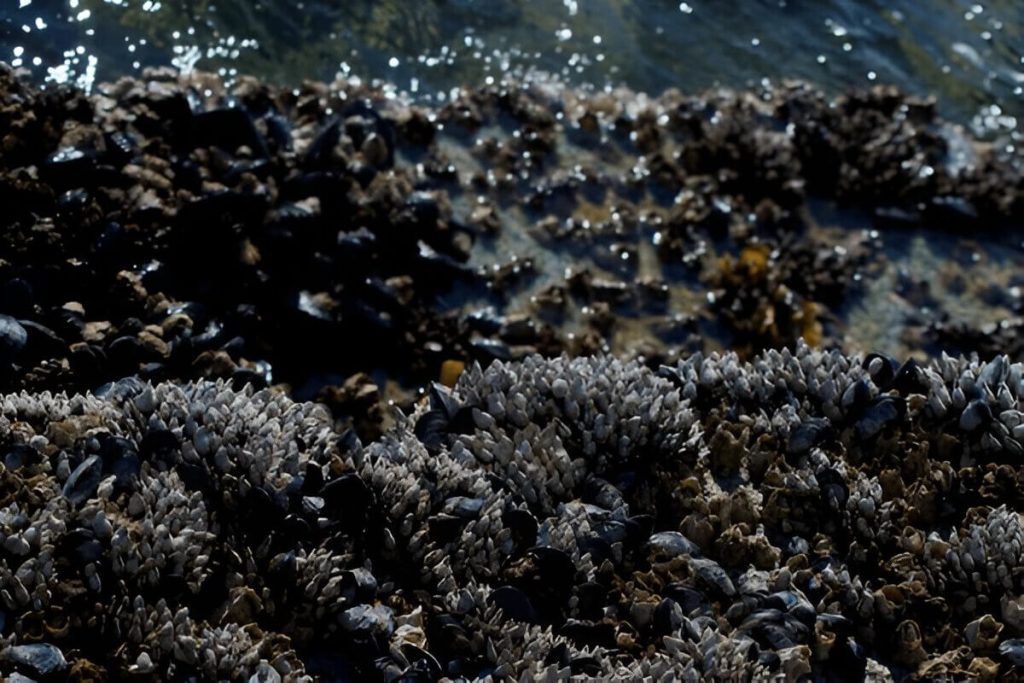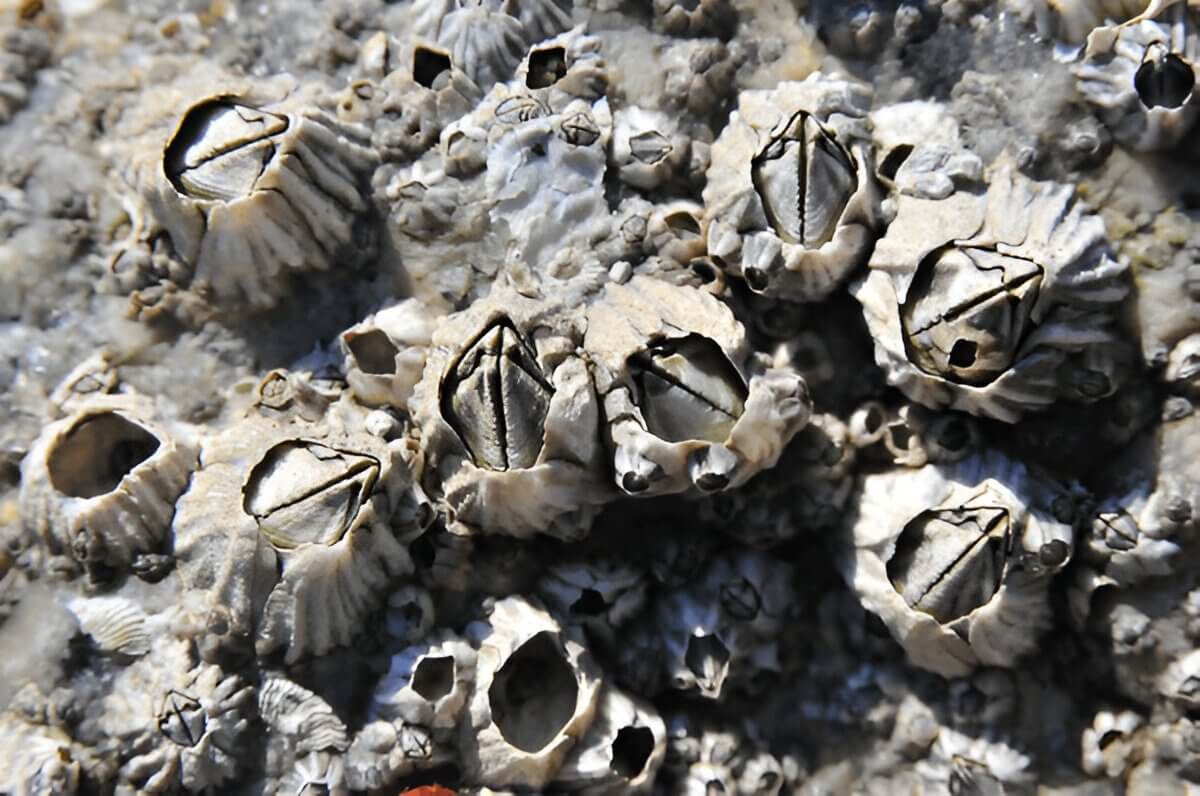Barnacles are fascinating marine organisms that play a unique role in the aquatic ecosystem. As members of the crustacean family, barnacles are closely related to crabs and lobsters, yet they exhibit distinct characteristics that set them apart. So, what exactly are barnacles? Fundamentally, barnacles are small, sessile (non-moving) creatures that attach themselves permanently to hard surfaces such as rocks, ship hulls, and even other animals like whales.
The definition of a barnacle encompasses its distinctive hard shell made up of calcareous plates that protect its soft body from predators and harsh environmental conditions. This shell is crucial for their survival in the often-turbulent marine environment where they reside. Barnacles feed through feather-like appendages called cirri, which they extend out of their shells to capture plankton and other small particles from the water.
These aquatic creatures have a unique life cycle starting as free-swimming larvae before settling down into their adult form. Once attached to a surface, they undergo metamorphosis into their iconic cone-shaped structure. Understanding these intriguing organisms not only sheds light on their biological processes but also highlights their ecological importance as filter feeders in marine ecosystems.
The Biology and Life Cycle of Barnacles
Barnacles are fascinating marine crustaceans that have intrigued scientists and ocean enthusiasts alike. Understanding barnacle biology requires delving into their unique life cycle, which is a complex journey from free-swimming larvae to stationary adults firmly attached to surfaces.
The life cycle of a barnacle begins with the release of eggs and sperm into the water by adult barnacles, often triggered by environmental cues such as temperature and tidal changes. This process marks how barnacles reproduce, relying on external fertilization. Once fertilized, the eggs develop into the nauplius larvae stage, characterized by free-swimming capabilities that allow them to disperse widely in search of suitable habitats.
During the larval stage of barnacles, these nauplii undergo several molts before transforming into cyprid larvae. This stage is crucial as it involves the selection of a permanent home where they will attach themselves for life. Cyprid larvae possess specialized appendages that help them explore potential surfaces, ensuring they choose an optimal location for survival and growth.
Once attached, the cyprid undergoes metamorphosis into a juvenile barnacle, beginning its sedentary existence. As they mature, barnacles form hard calcareous plates around their bodies for protection against predators and environmental challenges. This transformation not only highlights the remarkable adaptability within barnacle biology but also underscores their importance in marine ecosystems as both filter feeders and habitat providers for other species.
Understanding these stages provides insight into the resilience and adaptability of these intriguing organisms within their aquatic environments.
Types of Barnacles (Exploring Different Species and Their Habitats)

Barnacles are fascinating marine crustaceans that have adapted to thrive in various environments. Understanding the different types of barnacles, such as acorn and goose barnacle species, provides insight into their unique adaptations and habitats.
Acorn barnacles are perhaps the most common type encountered along rocky shorelines. These species attach themselves firmly to hard surfaces like rocks, ships, and even whales. Their conical shells protect them from predators and harsh environmental conditions, making them well-suited for life in intertidal zones where they endure both submersion and exposure to air.
In contrast, goose barnacles prefer a more pelagic lifestyle. They typically attach themselves to floating debris or seaweed in open waters. Their long stalks allow them to sway with ocean currents, giving them access to planktonic food sources. Goose barnacle habitats are often found in regions with strong currents and abundant floating materials.
Overall, barnacles can inhabit a wide range of environments (from tidal pools to the open ocean) demonstrating their remarkable adaptability. Understanding where these different types of barnacles live helps us appreciate their role in marine ecosystems and the diverse strategies they employ for survival.
The Role of Barnacles in the Marine Ecosystem
Barnacles, often overlooked due to their small size and tendency to cling stubbornly to surfaces, play a surprisingly significant role in the marine ecosystem. These crustaceans are more than just oceanic hitchhikers; they are vital components of their environment. As filter feeders, barnacles contribute to maintaining water quality by filtering out plankton and organic particles from the water column. This process not only provides them with nourishment but also helps regulate the levels of these particles in the ocean, contributing to clearer waters.
The ecological importance of barnacles extends beyond their role as filter feeders. They serve as a foundational species in many marine communities, providing habitat and protection for other organisms such as small fish and invertebrates that seek refuge among their hard shells. Additionally, barnacles can influence the distribution and abundance of other species by competing for space on submerged surfaces like rocks, ships, and even whales.
Furthermore, barnacles have a unique symbiotic relationship with certain marine animals. For instance, some species attach themselves to whales or sea turtles without causing harm, essentially using these large creatures as mobile homes that allow them access to nutrient-rich waters across vast oceanic distances.
The barnacle’s ecosystem role is multifaceted: they improve water quality through filtration, offer habitat structures for various marine life forms, and participate in intricate ecological interactions that highlight their importance within the broader marine environment. Understanding these roles emphasizes why preservation efforts must consider even such seemingly inconspicuous organisms when aiming for comprehensive marine conservation strategies.
Barnacle Adhesion (How Barnacle Attach Themselves to Surfaces)
Barnacle adhesion is a fascinating process that has intrigued scientists and marine enthusiasts alike. These small crustaceans have developed an incredibly effective method for attaching themselves to various surfaces, including the hulls of boats, which often leads to increased drag and fuel consumption for vessels. Understanding how barnacles stick to boats begins with examining their unique adhesive properties.
The barnacle adhesion process involves several stages. Initially, barnacle larvae search for a suitable surface to settle on. Once they find an ideal spot, they secrete a complex mixture of proteins and enzymes that form a strong, permanent bond with the substrate. This adhesive is remarkably resilient, capable of withstanding the harsh conditions of marine environments.
The secret behind the adhesive properties of barnacles lies in their ability to produce a multi-layered glue that hardens upon contact with water. This natural adhesive is composed of proteins that can bind strongly even underwater, a characteristic that has inspired biomimetic research aimed at developing new synthetic adhesives for medical and industrial applications.
The barnacle adhesion process showcases nature’s ingenuity in creating durable bonds in challenging environments. As we continue to explore these mechanisms, there may be potential breakthroughs in developing advanced materials inspired by these persistent marine organisms.
The Impact of Barnacles on Human Activity and Industry
Barnacles, though small and seemingly insignificant, have a profound impact on human activity and industry, particularly in the maritime sector. One of the primary concerns is the barnacle impact on ships, where these marine organisms attach themselves to the hulls. This phenomenon, known as hull fouling, presents significant challenges for vessel operators.
Hull fouling issues caused by barnacles are not merely cosmetic; they lead to increased drag as ships move through water. This drag forces engines to work harder, resulting in higher fuel consumption and increased greenhouse gas emissions. Consequently, shipping companies face elevated operational costs due to more frequent refueling requirements and potential delays.
The economic impact of marine fouling organisms like barnacles extends beyond fuel inefficiencies. They can also affect maintenance schedules and costs. Regular cleaning or dry-docking is necessary to remove these stubborn creatures from ship surfaces, which can be both time-consuming and costly. Additionally, if left unchecked, severe barnacle infestations may cause damage to ship coatings or even structural components over time.
Industries are actively seeking solutions to mitigate these impacts through advanced anti-fouling technologies and coatings designed to prevent barnacle attachment. These innovations aim not only to protect vessels but also to enhance efficiency and sustainability within maritime operations, ultimately reducing the economic burden posed by these tenacious sea dwellers.
Conclusion- The Significance and Challenges Posed by Barnacles in Our World Today
Barnacles, often perceived as mere nuisances, play a significant role in our marine ecosystems and present both benefits and challenges to human activities. These small crustaceans are essential members of the oceanic community, contributing to the food chain by providing nourishment for various marine species such as fish and seabirds. Their presence on rocky shores can also help stabilize these environments, reducing erosion and offering habitats for other organisms.
However, barnacles pose challenges, particularly in maritime industries. Their tendency to attach to ship hulls leads to increased drag, resulting in higher fuel consumption and maintenance costs. This phenomenon, known as biofouling, has prompted extensive research into eco-friendly anti-fouling technologies aimed at mitigating these impacts without harming marine life.
In conclusion, while barnacles may present obstacles in certain contexts, their ecological importance cannot be overlooked. Balancing their environmental roles with human economic interests remains a crucial challenge that requires continued innovation and sustainable practices. Understanding the dual nature of barnacles helps us appreciate their place in our world today while inspiring solutions that harmonize natural ecosystems with human endeavors.
